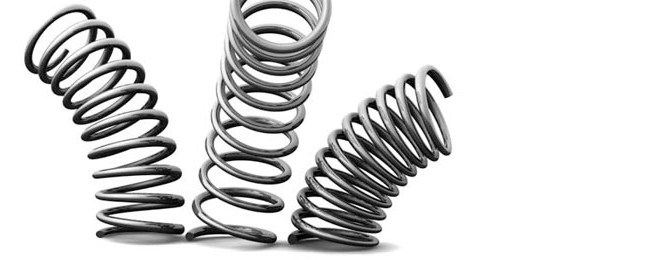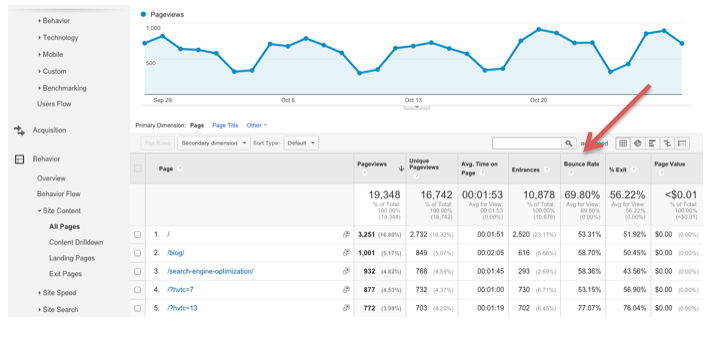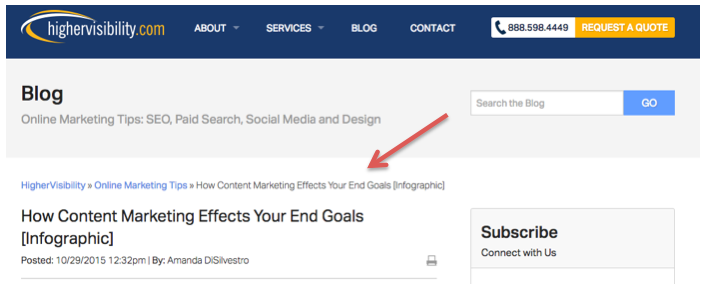Believe it or not bounce rate is actually directly affected by your SEO and vice versa. Many Webmasters don’t think about bounce rate in the context of their SEO strategy, but understand what it means and how you can improve this number can actually help you improve your SEO at the same time if you do it right. Fortunately, there are several different things you can do to improve this metric and start keeping people on your website longer.
How the Bounce Rate Metric Works
For those of you who are unfamiliar, a bounce rate metric will tell you the percentage of people who visited one page of your website and then bounced right back off. This means that the visitor either went back to a Google SERP through the back button, by x’ing out of the webpage all together, or by clicking on a link that sent them to any other website that is not yours. Whatever the situation, if someone didn’t stay on your website, they are counted as part of your bounce rate percentage.
You can find your bounce rate by look at just about any report in Google Analytics and then looking at the “bounce rate” column at the bottom. Below is a sample screenshot from the Pageviews report:
As far as what is a good bounce rate, that will of course depend on your type of website. HubSpot created some great benchmarks recently that hits the nail on the head for the bounce rates you should be seeing for certain types of websites as well as certain types of pages:
- Content Websites: 40-60%
- Lead Generation: 30-50%
- Blogs: 70-98%
- Retail Sites: 20-40%
- Service Sites: 10-30%
- Landing Pages: 70-90%
Now, keep in mind that bounce rates are not the end-all-be-all of metrics. Just because you have a high bounce rate doesn’t mean that your content isn’t doing its job—in fact it could have done a great job and given a reader what they needed quickly; thus improving your credibility. For this reason it’s more important to look at your bounce rate trends over time than to look at this metric with a small scope. I would also recommend creating a custom segment within Google Analytics to make this happen, which you can learn more about here.
So What Does Bounce Rate Have to Do With SEO?
As you’ll see in the list below, good SEO is going to help people stay on your website because SEO is all about optimizing your website. Sure SEO is important around the web as well—building authority with social media, building natural external links, creating relationships with influencers, publishing trustworthy content through guest blogging, etc.—but SEO really starts on your actual website. Things like website navigation, page load time, architecture, internal linking, and publishing relevant content are all great for your SEO; and then subsequently your bounce rate.
6 Quick Ways to Improve Your Website’s Bounce Rate
Keeping users on your site, which means lowering your bounce rate, is going to depend on a lot of different factors. SEO and content marketing is all intertwined when it comes to giving the reader what they want, but there are a few things you can make sure you do that will directly affect your bounce rate:
-
Improve your page load time.
You only have about 3 seconds before someone will click the “back” button if your page is taking to long to load, which makes this one of the most common reason that you would have a high bounce rate. Use a tool such as PageSpeed Insights by Google to determine how fast your page is loading and what you can do to help it load faster for both mobile and desktop.
-
Always use internal linking.
Internal linking has been a staple for good SEO for ages, but still many Webmasters don’t take it seriously. Remember that internal linking does not just look good in the eyes of Google, but it makes it easier for readers to click around your website. If you have something relevant to link to within your website, always be sure to put a link in your content (you’ll notice a few internal links within this piece as well!).
-
Use breadcrumbs for navigation.
Navigation is incredibly important for your SEO and your bounce rates. Internal linking is a form of good navigation as well as using a breadcrumbs plugin. Breadcrumbs track where a visitor has been so that he/she can easily jump back or forward without getting frustrated and leaving your site for a Google SERP altogether. Below is an example of how breadcrumbs work from our sister site HigherVisibility:
-
Install a Related Articles plugin.
Just as with the last two points, this is another way to make it easy for readers to navigate around your website. A Related Articles plugin, which you can download here, will help show your visitors what else you have to offer and hopefully catch their attention so that they say on your website. YouTube is the master of using Related videos to help keep readers on their site, and it really can work for you in the same way but just on a smaller scale. If you look at the bottom of this webpage, you’ll see that we are using the Related Articles plugin.
-
Improve the readability of your content.
This means using subheadings, bullet points, bolding, and more. The more you can break-up your copy the easier it will be to read. If you publish a big block of text visitors are more likely to click off your page and find something easier to read. This is also why different content types, such as infographics and videos, are so important to incorporate into your strategy. You can learn more about using different forms of content here.
-
Always avoid popups.
Plain and simple, if popups weren’t annoying enough to make someone click off of your site then they are going to break the reader’s train of thought and cause you to lose a potential reader. Popups also give a website a spammy feel, which could end up causing your reputation to go down and your SEO to suffer in general.
And one major reason that encompasses SEO: You have to attract the right visitors. If you’re not spending time creating the right landing pages, CTAs, quality content, and connecting with the right people then the wrong people are going to be causing your bounce rate to soar. Visit here for help with an SEO strategy in general.
Is there anything you would add to the list when it comes to bounce rate? Let us know your thoughts and your experiences in the comment section below.


